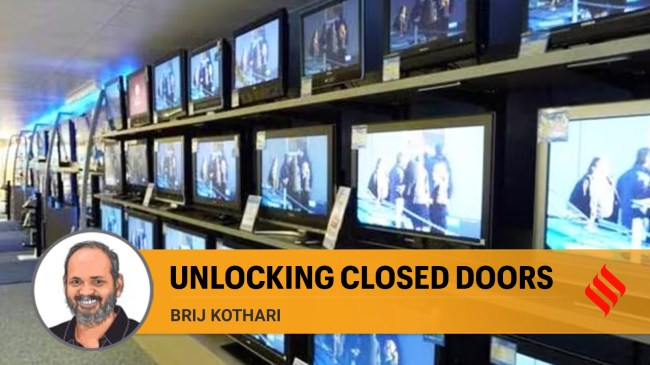Opinion Everyone should be able to watch TV — including those with disabilities
Notifying accessibility standards for TV can pave way for similar policy in film
 From YRF’s alacrity and response to a citizen email, we know a tectonic shift has taken place in the Indian film industry. This stems from four legislative policy and judicial interventions in 2016, 2019 and 2023. One, the Rights of Persons with Disabilities (RPwD) Act, 2016 enshrines every person’s right to entertainment. (Representational Image)
From YRF’s alacrity and response to a citizen email, we know a tectonic shift has taken place in the Indian film industry. This stems from four legislative policy and judicial interventions in 2016, 2019 and 2023. One, the Rights of Persons with Disabilities (RPwD) Act, 2016 enshrines every person’s right to entertainment. (Representational Image) Akshat Baldwa, a young law student at the National Law School of India University (NLSIU), happens to be blind. He is “passionate about pushing for constructive change to help the disabled lead more dignified lives”. Baldwa and others — three of them blind and one deaf — have mounted a legal challenge in the Delhi High Court to ensure that all films in theatres, on TV, and OTT provide accessibility features like Audio Description (AD) for the visually impaired and Same Language Captions (SLC) for the hearing impaired. Interim orders have empowered citizens to write directly to film producers or the Ministry of Information and Broadcasting (MIB) to demand that any new film be made accessible, in case it is not.
Baldwa shot off an email to Yash Raj Films (YRF), one of India’s biggest film production houses, requesting AD and SLC on their film Tiger 3, starring Salman Khan and Katrina Kaif. Within four days, Baldwa received a positive response. The YRF team agreed to provide both the accessibility features in Tiger 3’s release on Amazon Prime Video and the film’s distribution on satellite TV.
From YRF’s alacrity and response to a citizen email, we know a tectonic shift has taken place in the Indian film industry. This stems from four legislative policy and judicial interventions in 2016, 2019 and 2023. One, the Rights of Persons with Disabilities (RPwD) Act, 2016 enshrines every person’s right to entertainment. Two, MIB’s Accessibility Standards (AS, 2019) for TV stipulates accessibility on half the entertainment content on TV. Three, the Delhi High Court ordered YRF in 2023 to deposit AD and SLC files of their blockbuster film, Pathaan, with the Central Board of Film Certification (CBFC). Four, the court recently ordered MIB to “designate a special officer to deal with representations” asking for accessibility features on specific films.
Accessibility in films is ready to traverse from a handful of projects to around 2,000 films that CBFC certifies every year across Indian languages. The Pathaan and Tiger 3 precedents are pointing to a policy at MIB and CBFC to mandate AD and SLC files for all the films they certify. To its credit, MIB has also framed draft accessibility standards for films.
A policy is as good as the quality of its implementation. The implementation of the Accessibility Standards (AS, 2019) on TV is a case in point. TV networks have begun the implementation of SLC on serials. However, four years after the standards were framed, SLC on TV serials in the top five languages averaged just over 8 per cent. In the other Indian languages, and content genres, it is near zero.
The primary reason for the low compliance of media accessibility on TV is that AS, 2019 is yet to be notified. MIB’s gentle persuasion of the entertainment industry has got the ball rolling but TV network compliance is low. Star TV leads the networks with an estimated 26 per cent of TV serials with SLC. It has also set a quality benchmark. Zee and Sony are distant second and third, while Colors has barely made a beginning with one SLC programme. Doordarshan is notably missing from the implementation of the government’s own accessibility policy. Unsurprisingly, therefore, private networks like Sun, Gemini, and Udaya do not yet have accessible programmes. The number of accessible TV serials, across all languages, has plateaued at around 60, but needs to grow more than tenfold.
Cajoling got us this far, but system acceptance and compliance require MIB’s leadership in notifying the long overdue AS, 2019 for TV. That will pave the way for speedier framing and notification of the accessibility standards for films, and most importantly, quality implementation.
The writer is an adjunct professor at IIT-Delhi’s School of Public Policy and leads the Billion Readers (BIRD) initiative






